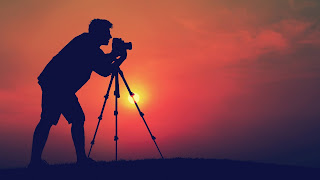Yvette Heiser -Ways to Produce a Black Background
Black was one of the
first colors used in art, as watercolor was the first material turned into
color. Black was also the first color of essay used for printing. Thus, an expert
photographer Yvette Heiser says that
we can't consider art if we don't consider the color black and its multiple
uses and counter accusations.
Throughout history, it's
been used to represent wrong, darkness, riddle, mourning, fineness, or power
depending on the culture. But what about a black background in photography?
Yvette
Heiser Photography – Captures Modern and Traditional Photos
Use a black background
Here Yvette Heiser says,
the most straightforward way to produce black background photos is to use a
black background. Just like anything differently in photography, it has its
tricks.
To rephrase the authors
of the book Light, Science & Magic we tend to believe that light is the active
player in lighting, but different shells change light else, so the subject
plays an active part too, so choose the right material.
Utmost professional
paper backgrounds have non-reflective colors. Still, you can buy your paper to
craft a DIY background. Just make sure it has a matte face.
Yvette
Heiser -Why is Professional Photography Important?
Use a slate card
Cameras work by assaying
the light that comes in through the lens to tell you the correct exposure for
your print. So, they measure the light that's reflecting from the objects in
front of them.
Still, the light cadence
inside your camera is calibrated using the principles of the zone system I was
telling you about on the morning of the composition.
Use an external light cadence
In the former two ways,
I explained how you can avoid black backgrounds looking slate as a result of
incorrect light dimension from your camera.
So, another way to work
this issue is to avoid using the light cadence in your camera. You've
presumably seen professional shutterbugs using a handheld external device to
determine exposure. That device is an incident light cadence.
Use spot metering mode
Still, you can use the
camera's cadence to get the correct exposure; If you don't have a slate card or
an incident light cadence. Keep in mind that spot metering mode is only available
if you use your camera in homemade or a semi-automatic mode similar to orifice
precedence or shutter speed precedence.
Blacken the background using flags
Any background – indeed
a white background – can be black if it doesn't admit any light. Still, it's
not always that easy because light can unmask your background.
Make sure you angle it
in a way that you don't intrude on the light falling on the subject. Of course,
you can also block part of it and produce a special effect that illuminates
only a portion of the face, as shown in the image over.
Look for shadow areas
Yvette Heiser says, when
you're shooting outside, and you don't have any gear other than your camera,
you can still produce a black background.
Make sure you're using
the correct exposure to avoid the camera overusing the murk and making them
look slate.




Comments
Post a Comment